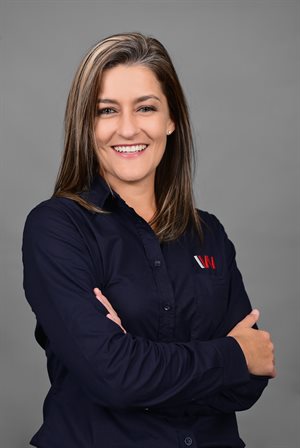
Jolene Visser CA(SA)
Meet the loss adjuster
Now, let me clarify upfront – a loss adjuster is not necessarily born from accounting, but I am, and so my accountant cap is well and truly infused in my day-to-day work as a loss adjuster. I stumbled into loss adjusting approximately three years ago when I was looking for something new and challenging to get involved in. A new universe opened up for me! I discovered that my new role as a loss adjuster provides me with unlimited variation – both in terms of industry exposure, interaction with other professionals, and office-/non-office-bound work. Put differently, I get a rush from being able to swap my high heels and blazer for a pair of safety boots and a high-vis vest from time to time. And there is value in spreading the awareness of what the role of a loss adjuster entails: within your financial role, you may be called upon to assist with the formulation of a claim to submit to insurers, or perhaps you have a career change looming.
Let us start with what a loss adjuster does. The Institute of Loss Adjusters of Southern Africa defines loss adjusters as “the bridge between the Insurer and the Insured in the event of a claim”, but I believe the role is more than that. My personal definition would be that the loss adjuster establishes and maintains trust and goodwill between the insurer and the insured during a time of loss.
What does this mean in practical terms? Well, typically appointed by an insurer (or several co-insurers), a loss adjuster reviews, on behalf of the insurer, a claim submitted by the insured. The review extends to the circumstances of the event, the extent of damage and resulting loss to the business, the available cover provided by the insurance policy, as well as the estimated duration and cost of reinstatement to get the business back to its normal operation.
But it does not stop there. Depending on the complexity of the claim, the claim process could be quite lengthy and may require ongoing review and adjustment during the reinstatement period. This necessitates continuous timely and effective communication by the loss adjuster with the insurers, the insured (and related parties such as the insured’s broker and claims preparer, the latter of which may be an external third party) and other relevant authorities or experts throughout the reinstatement process.
The complexity and size of the claim often also dictate the extent of the “physical” or in-person involvement it requires from the loss adjuster. Site visits are key to claims where physical damage occurred (think fire damage, floods, explosions, earthquakes) as it is not practical for an insurer to physically inspect each reported claim themselves. The appointed loss adjuster therefore undertakes this task on the insurer’s behalf and will visit the site as soon as possible after the occurrence of an event, and as often as required thereafter to monitor reinstatement, and report all the necessary details to the insurer.
Often, these site visits require on-site meetings with other experts (such as forensic fire investigators, engineers, quantity surveyors and the like) to discuss the damage incurred and to determine the best and most economical reinstatement path possible – whilst, of course, not losing sight of the cover the insurance policy allows. The physical presence and monitoring of a claim is a dynamic gear in the bigger loss-adjusting engine.
The loss adjuster will thus review a claim in various respects and in doing so, achieve a result which is fair to both the insured and the insurer (considering all the variables at play), and more importantly, that is in line with the cover provided by the insurance policy. The ideal result is an agreed settlement amount which all parties happily sign off on (until the next disaster hits, as much as I dread to say it).
General and specialised lines of loss adjusting exist. Whereas an engineer will generally work on the material damage side of a claim (as it pertains to buildings, equipment, plant, and so forth), stock losses and the business interruption side of the claim (in simple terms, the damage to the profit as a result of the event), will generally be attended to by a suitably qualified accountant.
Optimal efficiency is achieved within a loss adjusting team when there is collaboration between the members of a multi-disciplined group of adjusters; however, it is a person-specific appointment from insurers and not a firm-specific appointment, and therefore the successful integration of relevant sources of knowledge, be it fellow adjusters or experts from other career-walks, is fundamental in managing relationships all around.
In my case, my qualification as a chartered accountant (and my background in forensic services) puts me squarely in the Business Interruption section of claims. In this space, I can apply my accounting knowledge, understanding of businesses and investigative skills to determine whether a claim is appropriately quantified in the context of the damage as well as in the context of any factors unrelated to the event that may affect the business’ performance. Only then will the final quantum of the claim be determined.
There is much more to say about the engaging role of a loss adjuster, more than can be said in a single article, so please go to my LinkedIn page for further discussion on commonly asked questions.
